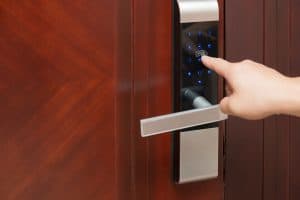Magnetic door lock systems can provide optimal security to homes and commercial establishments. But these locks can sometimes malfunction or fail. So what can you do if a magnetic door lock system isn’t working? We've asked the experts, and here’s what they tell us.
Magnetic locks can malfunction as a result of wear and tear, faulty electronics, or a failure to lock or release due to bad alignment. To address the issue, first, test the lock to identify the source of the problem. Then, follow the appropriate troubleshooting steps based on the identified culprit. Depending on the severity of the issue, the best course of action might be to replace the lock entirely.
Successfully repairing an electromagnetic door lock system means following the correct steps. Keep reading to understand the details of troubleshooting and fixing magnetic lock systems to reduce the risks of costly mistakes.
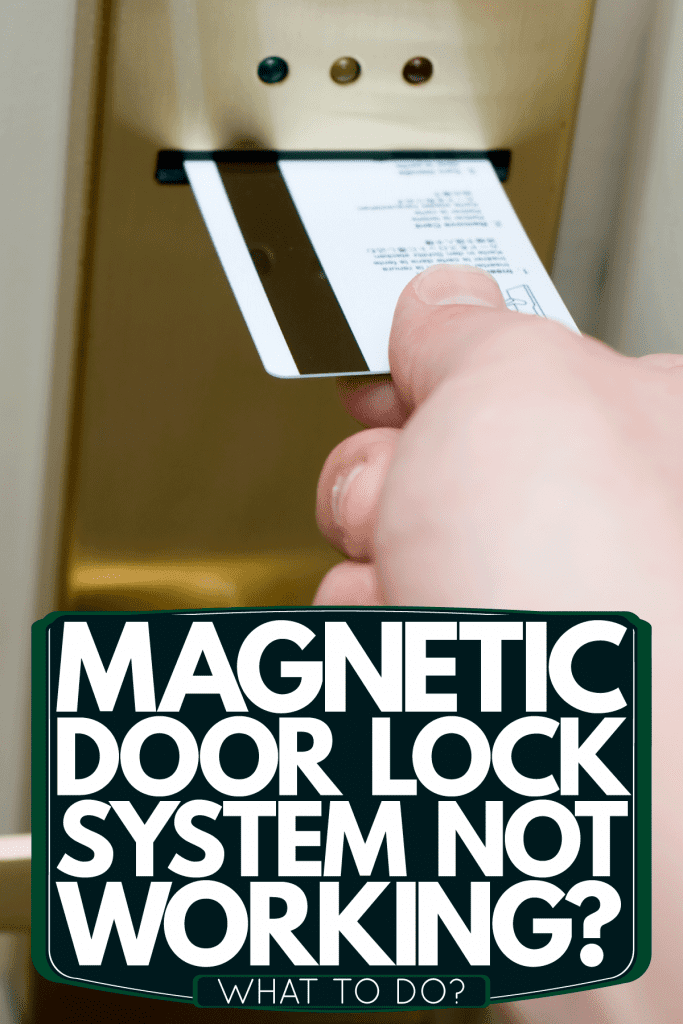
What Is A Magnetic Door Lock?
A magnetic door lock system uses an electric current to secure doors with magnetic force. If in the locked position, the magnetic force produced by the system is strong enough to prevent someone from opening the door.
Many magnetic locks have holding forces that range from 50 to 1,800 lbs. Therefore, an average adult would need to exert more effort than a particular system’s holding force to open the door, which would be quite difficult (if not impossible).
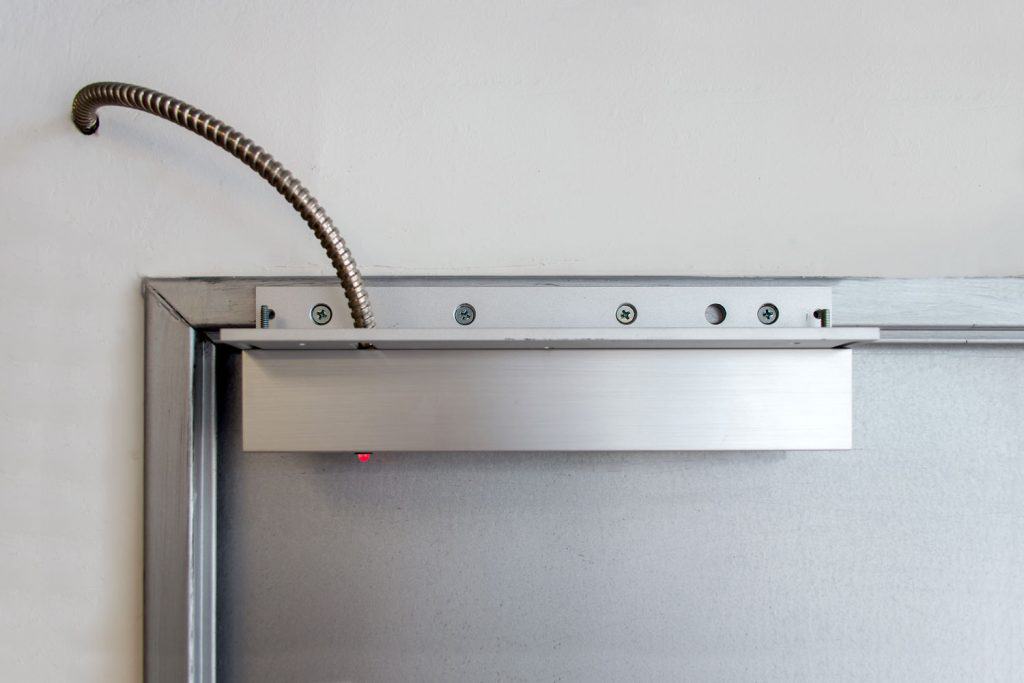
A 2004 study shows that males exerted a maximum of 90 lbs of pulling force while standing. On the other hand, females exerted a maximum of 55 lbs of pulling force.
That investigation demonstrated that virtually anyone would have a difficult time opening a door with a magnetic lock.
How Does A Magnetic Door Stop Working?
Electromagnetic door locks may stop working because of malfunctioning parts. Fixing a damaged magnetic door lock system requires a careful assessment of the situation which includes identifying the source of the issue.
Some of the causes of magnetic doors that fail to work include:
Wear And Tear
Frequent opening and closing can make magnetic door lock systems fail. In turn, the mechanisms may misalign. Otherwise, the power supply delivered to the striker unit might become insufficient over time.
Rust, significant moisture, and extreme temperatures may also cause the magnetic door to experience more wear and tear than usual. These elements might warp certain parts, causing the lock to malfunction or stop working altogether.
Faulty Electronics
Electromagnetic locks work by creating magnetic fields, causing internal magnets to create strong pulling forces that attract armature plates to keep doors closed. In some cases, the electronics in these systems can fail, reducing the security of the lock.
Some possible sources of failing electronics in magnetic door locks may include the following:
- Low-quality cables that break or thin easily
- Power supply failing to provide sufficient electricity to the electromagnet
- Errors, bugs, or glitches in the software
If faulty electronics are the main cause of a magnetic door not working, make sure to assess the situation carefully. For example, if you only need to replace some cables, it might be possible to do so without professional help.
But don’t hesitate to call the experts if you’re unsure about the proper way to fix the door lock’s electronics. For instance, it's a good idea to consult professional help if you see sparks flying from the unit’s circuit board.
Failure To Lock Or Release Due To Bad Alignment
Magnetic doors that fail to lock or release might fail because of improper door placements. If the automatic door opening-and-closing system has an improper alignment, the doorway can fail to lock or release properly. In some cases, the door will fail to open or close at all.
Readjusting the door may solve the problem. But bowed, warped, or twisted doors may need to be replaced before reinstalling electromagnetic systems for the locks to work properly.
How Do I Test A Magnetic Lock?
The exact steps to test or troubleshoot malfunctioning magnetic locks depend on specific units. Certain models will need specific instructions to check for faults. Users should consult their owner's manuals or ask the manufacturers to help with these precise steps.
For instance, here are the steps to troubleshoot a FingerTec Door Access electromagnetic lock:
- Connect a push button to the controller.
- Push the button to test if the electromagnetic lock can release.
- If the door still fails to open, check the Wiegand wiring between the main unit and its controller. Make sure that the connections are in the right places.
- Check the conditions of the cables. See if the cables have cuts, strips, or tears.
- If the door still fails to open at this point, flash and update the software.
If the steps above won't solve the problem, your magnetic door lock system might be beyond repair. Consult with the product’s manufacturer or supplier to check for options if the product is still under warranty. Otherwise, purchase and install a new electromagnetic door locking unit.
Click here to see this electric magnetic lock on Amazon.
You may also want to read this post on How To Remove A Magnetic Door Lock to help you take apart an electromagnetic lock system from a door.
How To Fix A Magnetic Door Lock System
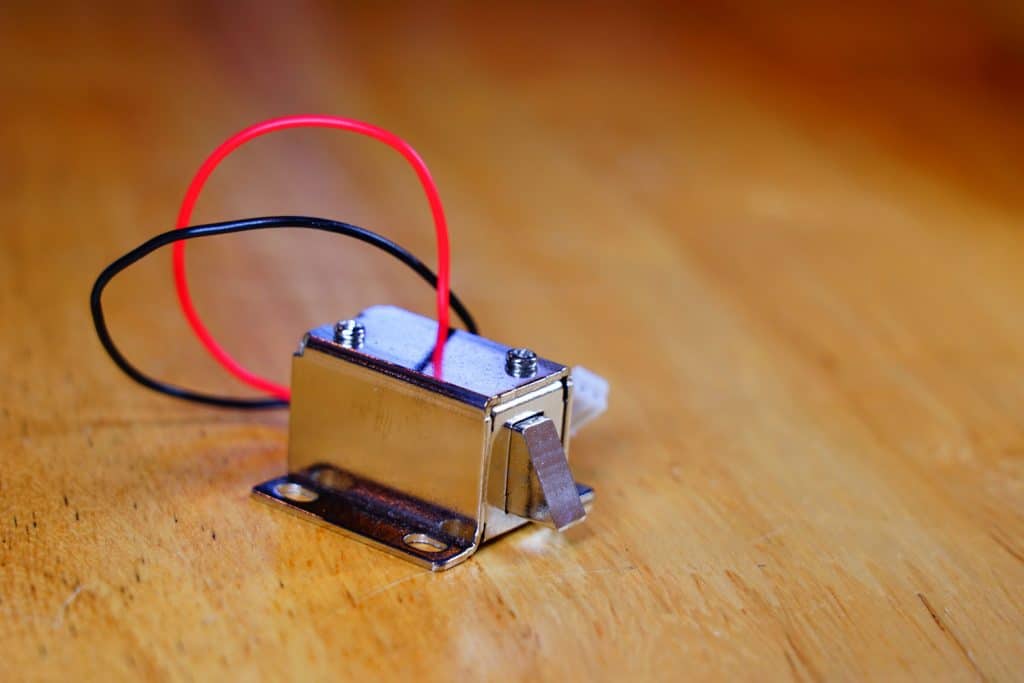
The steps to repair a magnetic door lock system that's not working depend on certain factors such as the brand and model of the lock and the source of the problem. For instance, here are the steps to repair a MagLock Electronic Door Lock with a faulty power supply:
- Open the power supply by using a flat head screwdriver or a similar tool to pry the part open.
- Purchase a 12 volt 1 amp power supply.
- Cut the wires connecting the old power supply from the main unit.
- Connect the new power supply to the main unit and make sure that the polarities of the wires match.
- Test the door lock to see if the problem reoccurs.
You can also check out the following video for a visual representation of the steps mentioned above:
How To Install A Magnetic Door Lock
In certain cases, it might be best to replace the entire lock system instead of repairing it. A new magnetic door lock can help deliver better security than fixing the product.
Again, consult the manufacturer or owner’s manual of the product to check for the specific steps. For example, here are the steps to install an Excel SDC E600 Series Magnetic Lock:
- Fold the template and mark the screw holes with a pen or pencil.
- Drill holes at the marked locations.
- Mount the armature to the door using the supplied bolts, screws, and washers. Use the accompanying Allen wrench to help you with this step if you don’t have a compatible screwdriver nearby.
- Install the mounting plate to the door. Make sure that the interlock detail is facing away from the door.
- Make sure that the armature plate and the door line up properly. If not, remove the armature plate and realign.
- Push the magnet housing to both ends of the main plate. Ensure that you cover the entire length of the interlock detail.
- Select the jumper position and start supplying the lock with electricity.
- Test the magnetic door lock to see if it functions properly.
You may also read this post on How To Install Magnetic Lock On A Glass Door for more information about setting up an electromagnetic lock.
Click here to see this Excel magnetic door lock on Amazon.
Can Magnetic Locks Be Picked?
Magnetic locks cannot be picked using traditional lock-picking tools and methods, making them highly secure safety options. One of the reasons is because some models use special keys that are highly challenging to replicate using standard rekeying methods.
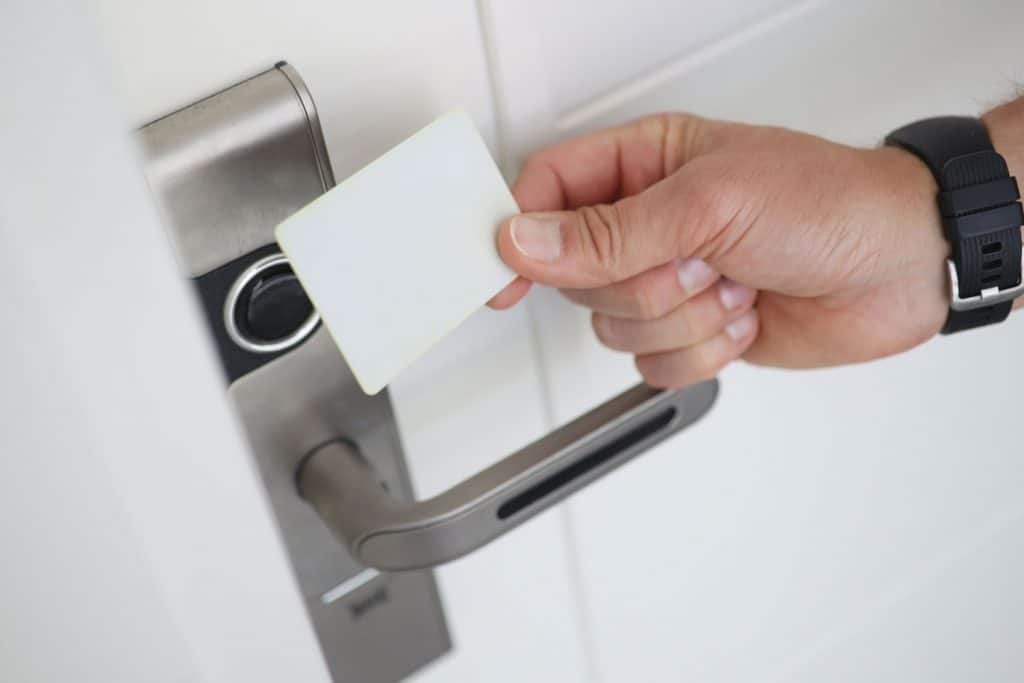
Moreover, some electromagnetic locks use cards to unlock doors instead of openers showcasing traditional key designs. Therefore, those who wish to open these doors by replicating card keys would need to follow complicated processes to do so.
Click here to see this RFID magnetic door entry system on Amazon.
In Closing
Remember that fixing a magnetic door lock system requires you to find the source of the issue first. Once you identify the main problem, troubleshoot the product to help you determine the correct actions to take to fix it.
Don’t forget to test the magnetic lock after fixing it. That way, you’ll know if you need to do extra work on the product.





